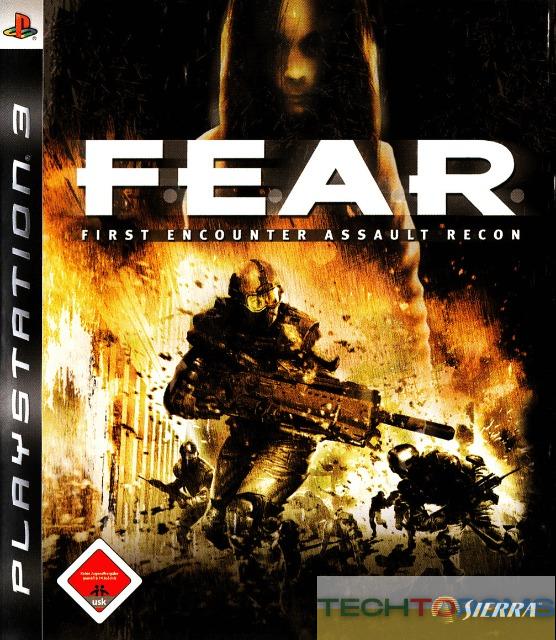
F.E.A.R. First Encounter Assault Recon Rom Download
Apr 16th, 2024
US
3.27 G
1,157
Download F.E.A.R. First Encounter Assault Recon ROM For PS3 At TechToRoms!
It was the year 2005 and there was a tectonic shift coming, and this time it was happening within first person shooter (FPS) genre. From nowhere came a game that had techno-advanced features as well as storytelling capabilities never before seen in the genre. The name of this game is F.E.A.R.: First Encounter Assault Recon, designed by Monolith Productions famous for games like No One Lives Forever and Blood series. They didn’t release a game; they made an experience that shunted you into terror.
Genesis of F.E.A.R
F.E.A.R revolved around concept of psychological horror mixed with combat that left gamers feeling uncomfortable. The player assumes the role of Point man, one of the members of F.E.A.R team- a fictional special forces unit part of United States government. It then turned into an endless sequence of disasters which unfolded to be an investigation about supernatural force that took control over corporate personnel.
The Characters
However, Alma Wade remained the main focus point for F.E.A.R’s narrative while Paxton Fetel acted as her powerful agent. Players uncovered pieces of F.E.A.R.’s story through cassette tapes, hallucinations and intensely emotional set-pieces so existential in their finality.
Technological Marvel
One aspect in which F.E.A.R showed its technological marvels is through enemies’ A.I system. Referred to as “A.I Director,” it received praises for its dynamic, random nature with ruthless moves far above anything else at that time. For every firefight – gnawing balletic complexity where flanks and suppressions occurred seamlessly with chilling accuracy on both sides – you felt like predator’s prey.
The Art of Combat
At its core, F.E.A.R had combat mechanics that were tight responsive and based on brutally realistic close-quarters fighting. Game’s A.I made humanly impossible tasks attainable because soldiers fighting against the player would behave more like a unit rather than as individuals.
Bullet Time
The bullet time feature that was introduced in the game became its emblem. The player could slow down time such that bullets and debris were seen moving slowly. It revolutionized the way games could be played; it offered players an opportunity to display amazing skills of marksmanship and tactical repositioning which were both stunning and empowering.
Enviromental Interaction
Moreover, F.E.A.R embraced environmental interaction as a tactical aspect. Explosive barrels, flammable gases or even walls that could be shot through to create new lines of sight .The environment wasn’t passive but an instrument itself, another weapon in your arsenal for inventive solutions amidst harrowing circumstances.
Horror Element
In their production of No One Lives Forever and Condemned series, Monolith have had many years working with horror genre before finding perfect expression in F.E.A.R.. The game was atmospheric horror personified, where the player’s own mind was as at risk as his/her avatar within the virtual world.
F.E.A.R.’s suspense was not built on jump scares (although it did have quite a number of those) but the unceasingly rising tension that enveloped the player who explored through dark, blood-drenched hallways. Using sound designing, lighting and level layouts, it established a setting that felt like terror itself.
Presence of Alma
Alma was the central antagonist in this game and her presence lingered throughout. In moments of weakness, she would come up as if to attack through the screen. The appearances were not only terrifying for players but also a smart way of manipulating them and questioning their real-life situations.
Influence and Heritage
For F.E.A.R., there was no separation between commercial success and critical acclaim since it had two expansions for further exploration into its universe as well as two sequels. It inspired numerous other titles which tried to emulate its formula such as sequels themselves, mods made by fans among others.
Technical Benchmark
F.E.A.R.’s significance went beyond pure gaming experience – it became a standard measure for PC games. Years before they could become commonplace, LithTech Jupiter EX engine presented complex lightening systems followed by particles then physics. It went above the limits of gaming engines; at least for some time when this happened.
Immersive Storytelling
Interactive storytelling in F.E.A.R. redefined how narrative-based FPS games should be developed. It showed how narratives could unfold slowly or quickly with different emotional weights under various genres’. Players didn’t play F.E.A.R., they lived it, thanks to innovative storytelling techniques introduced in the game.
Conclusion
When design elements converge with technology and narrative, something special happens; F.E.A.R is an epitome of that connection still talked about today. This game moved away from what had already been done within first person shooting genre making it more intense scary and satisfying after playing for those brave enough to do so. It showed us that games could be more than just entertainment; they could be emotional journeys that left a lasting impression long after the final boss was defeated.
SEE MORE INTERESTING GAMES









